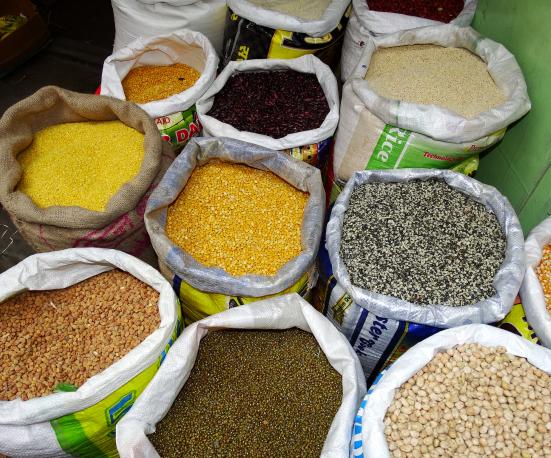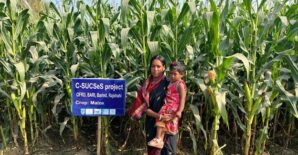Cross-posted from the FSP India website written by Rachel Kohn
India is both the largest producer and consumer of pulses in the world, with production and consumption preferences within the country varying by region. In terms of cultivation, for example, the country had 72 percent of the total global area of pigeon peas, 68 percent of the global area of chickpeas, and around 37 percent of the global area of lentils in 2012 (according to FAOSTAT), which accounted for 61, 68, and 20 percent (respectively) of global production. Meanwhile, since the Green Revolution in the 1960s, the reduction in the variability of paddy and wheat yields coupled with no comparable change for pulses led to diversion of land from pulses to those crops. There is a persistent supply-demand gap when it comes to pulses. Resource-rich farmers tend to grow crops like paddy, wheat, cotton, and sunflower, while pulses continue to be produced mostly by small-scale and marginal farmers under rainfed conditions. A recent IFPRI Discussion Paper by Kalimuthu Inbasekar, Devesh Roy, and P. K. Joshi, “Supply-side dynamics of chickpeas and pigeon peas in India,” examines the evolution of pulses in India between 1950 and 2011 and provides insight into how policy can support the industry for pulses.
Mapping out the dynamics of chickpea and pigeon peas over time, across states (grouped into six zones based on geographical location), and within states at the district level (for a number of states), the authors were able to place these areas into specific groups and evaluate the movement in pulses in response to changes such as the Green Revolution, the economic reforms of 1991, and the trade spikes since 2000. They also tested econometrically for factors affecting area allocated to pulses relative to competing crops using fixed-effects estimation. They take advantage of state and year fixed effects as well as including time-specific rainfall. The empirical model focuses on conditions such as rain dependence, technological improvements like mechanization, and economic availability of labor. The outcome variable measures intensity of pulses cultivation relative to the competing crops.
Previous studies found that as infrastructure developed and incomes rose, the country’s move to liberalize imports in pulses had a significant effect on pulses production and enforced the geographical decoupling of production and consumption of pulses in India. At the same time, the yields in pulses were not increasing due to a lack of high-yielding and short-duration varieties and competition. The authors note that the availability of infrastructure and inputs has hurt the pulses sector but mainly through the allocation of less land to pulses as increased mechanization and irrigation lead to the conversion of these lands to other remunerative crops.
The authors also found that pulses-producing districts were characterized by rainfed conditions, absence of irrigation, and absence of alternative profitable crops. “Pulses predominantly cultivated in the marginal and rainfed region under resource-starved conditions need an entirely different approach to increasing area, production, and productivity,” write the authors. As such, while it is important to address problems of rainfed areas, policymakers must ensure they will not lead to displacement of pulses from these regions as they are key to India’s pulses production.
Read More




